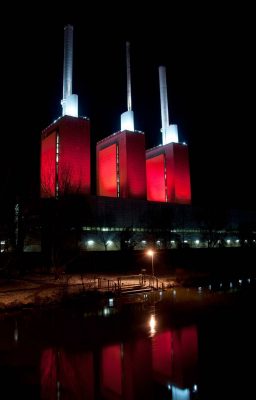In Patras, Greece, they work on smart city technology development using NB-IoT has started. But how can the developers avoid the need for a SIM card and its subscription?
Technical needs
The smart lighting controller, for example, has been sending one status update message of 40 bytes every five minutes and a message containing energy consumption data every hour without fail. This adds up to around 5kB sent per controller per 24 hour period on average (source: https://www.gsma.com/iot/wp-content/uploads/2017/09/iot_patras_09_17.pdf).
An uplink transmission for a status update every 5 minutes translates to 12 messages per hour plus one more message per hour for energy consumption data. This means 13 messages per hour. 5kB per day means that transmissions are active during an estimated 8 hours in the night only. Now let’s use this use case as our example and look at the implications for a number of different LPWAN technology options.
NB-IoT
For NB-IoT a 5kB per day capacity requirement is no problem. NB-IoT has no duty cycle limitation and is easily able to transmit the 40 bytes in download every 5 minutes. S/W updates over the air are also possible with NB-IoT as well.
SIGFOX
SIGFOX has to pass for several reasons. SIGFOX technology offers a maximum of just 6 messages per hour only. Moreover, SIGFOX has a 12-byte limitation per message in upload only. For this street light application, SIGFOX is completely useless. SIGFOX does not offer downlink for firmware updates.
LoRaWAN
LoRaWAN has to pass for several reasons as well. 40 bytes every 5 minutes means (40 bytes + 13 bytes header) x 13 = 689 bytes per hour. On SF12 the street lamp will require an uplink transmission time 2.07 seconds per message. With 2.07 seconds per message, the package loss will be high as shown by the Aloha effect and by interference with other IoT devices. Based on the Aloha effect the network will experience 82% package loss at maximum throughput. The only mitigation for LoRaWAN is to use a smaller spreading factor but this will limit the coverage range of the LoRaWAN gateway and require a more extensive network infrastructure adding significant cost and complexity to the system. LoRaWAN does not offer true bi-directional capability and so firmware updates in the field are not possible.
Weightless
Weightless technology uses TDMA with listen-before-talk (LBT) and Frequency Hopping. LBT and Frequency Hopping mean that Weightless has no limitation on duty cycle. It is like LoRaWAN on the licensed free band. You will save the subscription fee of euro 5 per year. Let’s now turn to an example deployment in a typical small to the medium-sized German city. The city of Hannover has approximately 52000 streetlights. A Weightless LPWAN in Hannover would save within 5 years 520000 x 5 euro x 5 years = euro 1.3 million. Hannover has an area of 204 km2 only. The TV tower called Telemax is 282 metre high (https://de.wikipedia.org/wiki/Telemax). The old TV tower called Telemortix is 141 meter high (https://de.wikipedia.org/wiki/VW-Tower). One Weightless gateway could cover the whole city. Weightless technology also offers true bi-directional communications capability enabling FOTA.
Conclusion
The winner for this street light example is Weightless technology, followed by NB-IoT. SIGFOX technology is technically incompatible with the use case and LoRaWAN is commercially incompatible because massive package loss requires a complex and costly multiple gateway infrastructures.
If you are intested in Weightless, NB-IoT, SIGFOX , LoRaWAN or any other wireless technology then to not hesitate do ask for wireless modules and antennas by email to harald.naumann (at) lte-modem.com

Hello Sir
Very informative and useful.I am looking forward for the analysis of Bosch case.